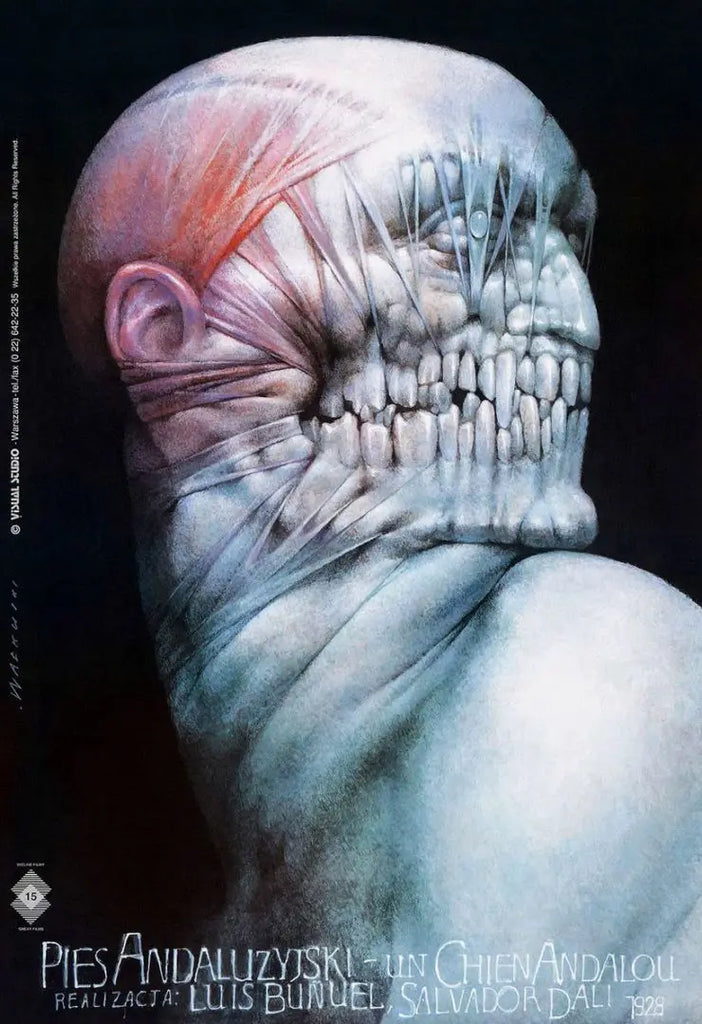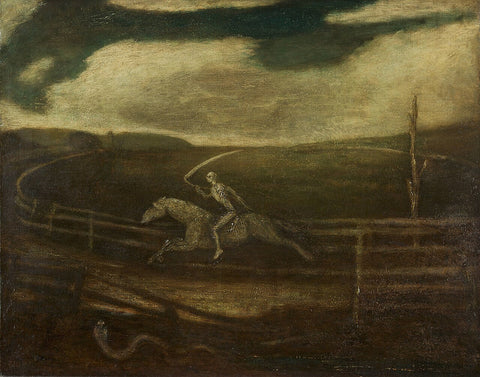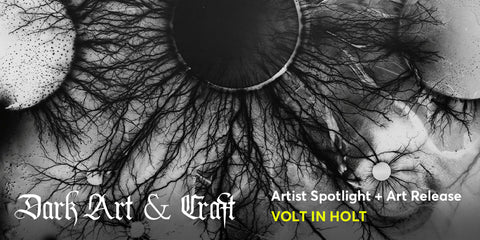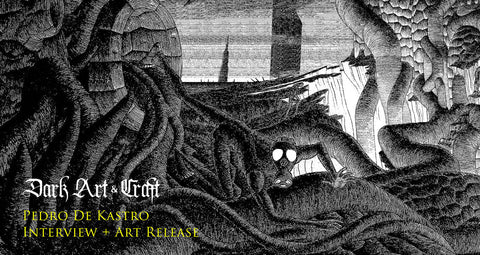
Farewell to Autumn Poster Art by Wiesław Wałkuski
Born in 1956 in Bialystok, Wiesław Wałkuski attended the Poland Academy of Fine Arts in Warsaw. Under the skilled professors Teresa Pagowska for painting and Maciej Urbaniec for graphic design. His instantly recognizable Art for film, publishing houses and theatres are masterworks in thematics. Wałkuski's dark and graphic offerings utilize the distinctly Polish tradition of Artist interpretation over direct subject imagery. It's often noted that in Communist Poland Art that was purely "Creative" was censored - pushing many Polish Artists to enter the world of Graphic design which offered greater outlets under this structured control.
One of Wałkuski's most famous works is his series of posters for Polish films, which showcase his ability to capture the mood and atmosphere of a film in a single image (Such as Montecchi and Capuleti [Romeo and Juliet] and Caligula. He has also created posters for concerts, exhibitions, and other cultural events, and his work has been exhibited in galleries and museums around the world.
In addition to his artistic talent, Wałkuski is also known for his political activism and social commentary. Many of his posters contain subtle messages or themes that speak to the political and social issues of the time in especially Poland, and he has used his art as a way to comment on the world around him. Overall, Wiesław Wałkuski is an important Polish figure in the world of poster art, and his work continues to inspire and influence artists and designers today.

Wiesław Wałkuski Ghetto, 1990
Polish film posters were widely different than those in the West in that they didn’t meet representational constraints; the imagery is inspired by the artist’s interpretation, rather than taken directly from stills. Devoid of star headshots and commercial connections, posters promoted and commemorated Polish ways of seeing.
From Sleek Mag

Danton poster by Wieslaw Walkuski
Polish Poster Art
During the period of communism in Poland, poster art and graphic design played a vital role in communicating political and cultural messages to the public. With traditional forms of media heavily censored by the government, artists and designers turned to posters as a way to express their ideas and opinions. The bold and expressive style of Polish poster art, with its bright colors and distinctive graphics, became a powerful tool for conveying messages of resistance and protest.
In addition to their political significance, Polish posters were also an important part of the country's cultural identity. They were used to promote films, concerts, and other cultural events, and helped to define the aesthetic of the time. Despite the constraints and limitations imposed by the government, Polish poster artists were able to create powerful and enduring works that continue to be admired and celebrated today. Overall, the importance of Polish poster art and graphic design during communism cannot be overstated, as they played a crucial role in shaping the country's cultural and political landscape.

Un Chien Andalou by Wieslaw Walkuski


Marivaux Island poster by Wieslaw Walkuski

Kochanica francuza / The French Lieutenant's Woman

Born Cover #1

© Wiesław Wałkuski Caligula Juliusz Słowacki Baltic Drama Theatre 1990

The Phantom of Liberty
Artist Resources
Wieslaw Walkuski – Recomposing The Borders Of Contemporary Art
Discover the underrated art of Polish poster design
Image Sources: https://revistabifrontal.com/wieslaw-walkuski-recomponiendo-las-fronteras-del-arte-contemporaneo/
https://www.heavymetal.com/news/wieslaw-walkuski-poster/
https://retroavangarda.com/gallery-of-friends/albums/Wieslaw_Walkuski/?img=1823
https://gallery.beslow.pl/galeria-tbpi/wieslaw-walkuski-tbpi-poster?lang=en





I have seen that poster, can it be repaired?!
Have you seen the Chekhov Backstage Stories poster? I found one in 2009 but it got damaged.